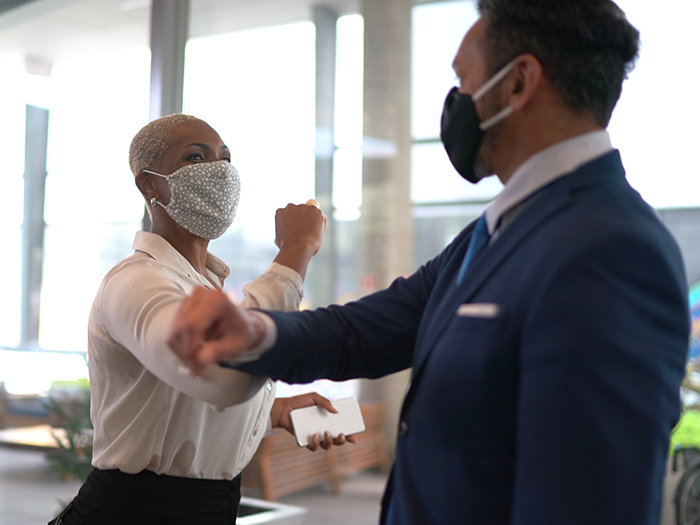Opinion | 3 Health and Wellness Considerations for Employers as Workers Head Back to the Office

I know what you’re thinking, another opinion piece on returning to the office post COVID-19?
As vaccine rollout progressed, the number of op-eds extolling the virtues of returning to the office or continuing remote-work increased. Some touted the benefits of remote work including a decrease in workplace harassment and the joys of a life without commuting. CEOs worried about the erosion of office culture.
The battle may even jump off the pages and into the workplace: 29% of workers say they’ll quit if forced to give up remote work while 4 out of 10 employers say they will fire employees who don’t return.
For the workers’ compensation risk manager, the question of whether or not to bring employees back isn’t about productivity, office culture or commute times, however. It’s about what working set up will best keep workers safe and healthy.
With that in mind, here are three employee health and wellness areas to consider before bringing workers back.
1) Workplace Ergonomics
COVID-19 had people in all manner of positions, from those who converted kitchen counters to desks or logged in from their couches to those with proper home office setups.
While these situations are meant to be temporary, they could pose problems if kept up long-term. An Institute for Employment Studies survey found that 58% of respondents had new neck pain, 56% had new shoulder pain and 55% had new back pain since working from home.
Don’t go rushing your employees back to the office in the name of ergonomic safety, however. Proper ergonomic positions can be achieved while working remotely.
If employers plan to offer remote work options, they should make sure each employee is equipped with a proper ergonomic workstation. Some may even consider hiring an ergonomic professional to evaluate their employee’s remote work setups.
2) Burnout and Employee Mental Health
Remote work options can both improve employee mental health and lead to burnout, depending on the worker.
Some have found their mental health improved as eliminating commutes allowed them to spend time on hobbies or self-care activities like working out.
Others found that remote work blurred the boundaries between their office life and their personal life, causing them to work longer hours.
A 2,800 worker survey by the staffing firm Robert Half found that 70% of respondents say that after transitioning to remote work during the pandemic they now work on weekends. Forty-five percent say they now work more hours during the week on a regular basis.
As with workplace ergonomics, employers can’t solve for mental health issues simply by returning folks to the office. Employees may feel anxiety about returning to work after a year away, especially with a deadly virus still spreading.
Allowing employees to gradually return by starting off with elective return to the office or through hybrid remote/in-person arrangements can help workers become more comfortable stepping back in. HR professionals should also be prepared to answer any questions about returning to the office policies and office safety protocols.
3) Is Your Office Safe to Bring Employees Back to?
Employers will, of course, have to contend with a variety of COVID-related safety protocols as they plan to bring people back to the office.
Even as more people get vaccinated, new variants, like the Delta variant, are spreading quickly. Consequently, masking, social distancing and other safety measures may need to be taken as people return to the office.
If your space isn’t capable of providing adequate space for social distancing, it might not be a good idea to bring employees back just yet.
Beyond COVID safety protocols, employers may need to evaluate whether their buildings are safe to return to.
Plumbing systems that have sat stagnant for months could increase employee’s risk of contracting legionnaires disease. Offices may have grown mold or other hazards while people were away.
Before bringing workers back, employers should go through their office spaces and tackle any issues that may pose a risk to their employee’s physical health.
Whatever your situation, it’s important to be flexible in your plans. Remote work offers employees many benefits, and if they’ve remained healthy and productive while working from home, employers should consider allowing them to continue. &










